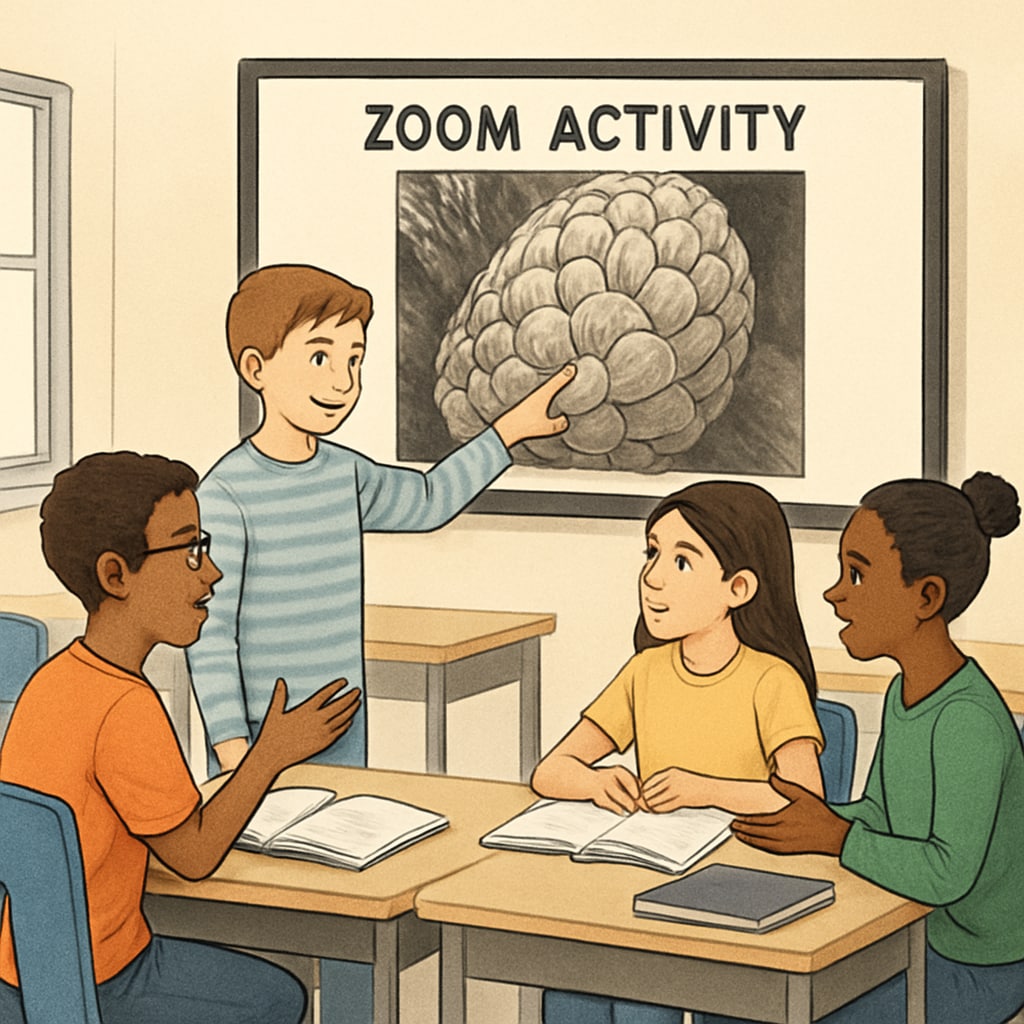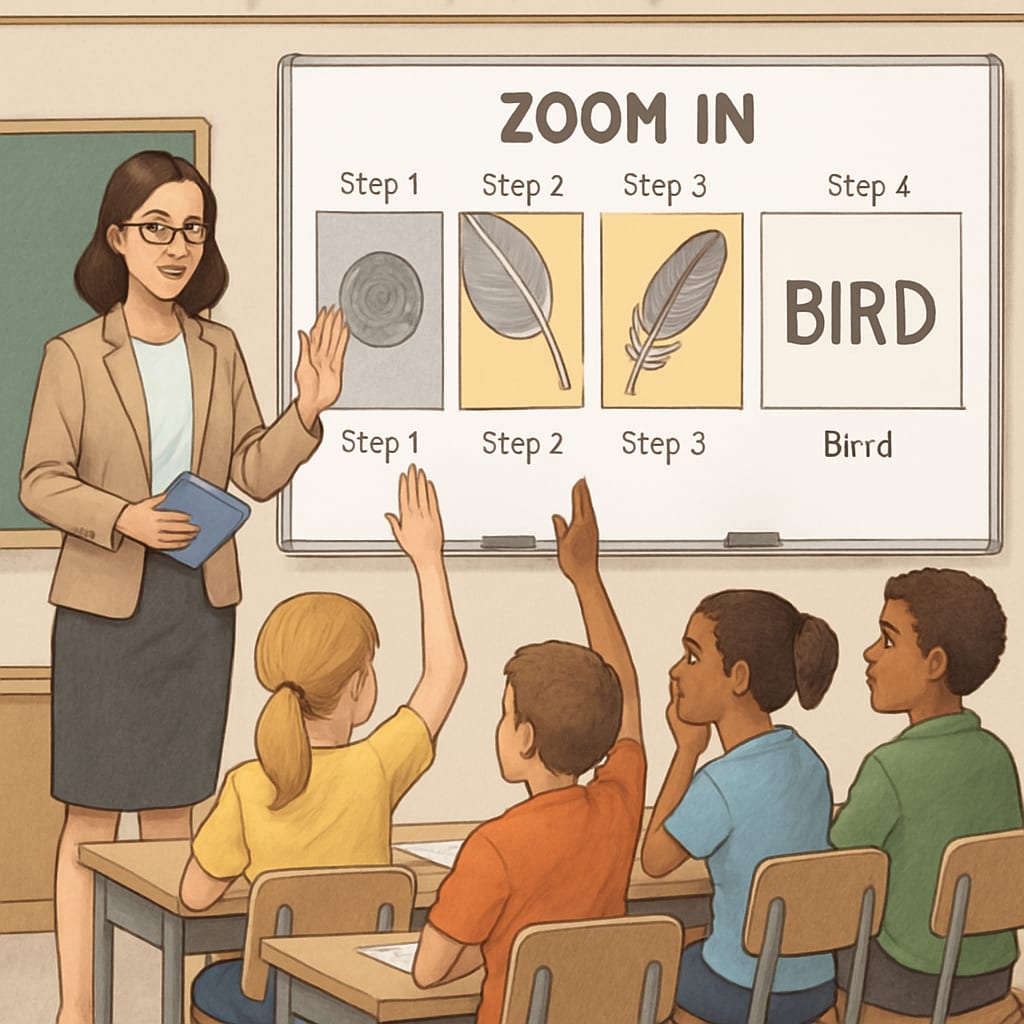In modern K12 classrooms, fostering student engagement and critical thinking is essential. Tools like Zoom and ReZoom teaching activities offer innovative approaches to achieving this goal. These visual thinking tools, based on the award-winning picture books “Zoom” and “ReZoom” by Istvan Banyai, are designed to enhance observation, reasoning, and critical thinking skills. This article explores the educational value of these activities, provides a step-by-step implementation guide, and highlights resources for finding answers and maximizing their potential.
What Are Zoom and ReZoom Teaching Activities?
Zoom and ReZoom teaching activities are centered around two visually captivating wordless books. “Zoom” begins with a highly detailed image that gradually zooms out to reveal a broader perspective, while “ReZoom” reverses this process by zooming in. Both books challenge students to think critically about context, relationships, and the big picture. These activities have been widely adopted in classrooms to encourage collaboration, problem-solving, and creativity.

Why Use Zoom and ReZoom in K12 Classrooms?
Integrating Zoom and ReZoom into K12 education offers numerous benefits. Here are a few key advantages:
- Enhanced Observation Skills: Students learn to closely examine details and consider their significance within a larger context.
- Critical Thinking Development: The activities promote reasoning and interpretation as students piece together the story behind the images.
- Collaboration and Communication: Group work fosters teamwork as students share ideas and perspectives to solve the puzzles.
- Creative Problem-Solving: The abstract nature of the visuals encourages innovative thinking and unique interpretations.
For example, research on collaborative learning has shown that activities requiring teamwork and problem-solving significantly improve student engagement and retention. Learn more about collaborative learning on Wikipedia.
How to Implement Zoom and ReZoom Activities in the Classroom
Here’s a practical guide for teachers to introduce Zoom and ReZoom activities effectively:
- Preparation: Obtain copies of “Zoom” and “ReZoom.” You can use physical books, scanned images, or digital slides.
- Divide Students into Groups: Assign 3-5 students per group to encourage collaboration and idea-sharing.
- Distribute Images: Provide each group with one or two sequential images from the book, ensuring images are shuffled and out of order.
- Set the Challenge: Instruct students to arrange the images in the correct sequence by discussing clues, patterns, and relationships.
- Facilitate Discussion: After the activity, lead a class discussion on the strategies used and the lessons learned.
In addition, online forums and educational platforms often share tips and printable resources for these activities. Explore critical thinking on Britannica for further insights on developing reasoning skills.

Finding Answers and Additional Resources
Since Zoom and ReZoom activities are designed to be open-ended, the “answers” often depend on student interpretation. However, educators seeking guidance can find resources in the following ways:
- Teacher Guides: Many editions of “Zoom” and “ReZoom” include instructional guides with sample solutions.
- Online Communities: Platforms like Edutopia and Teachers Pay Teachers provide lesson plans and tips for using these books.
- Workshops and Webinars: Attend professional development sessions focused on visual literacy and collaborative learning techniques.
Remember, the goal isn’t to find the “correct” answer but to encourage thinking outside the box and fostering discussion.
In conclusion, Zoom and ReZoom teaching activities are powerful tools for enhancing interaction and critical thinking in K12 classrooms. By implementing these activities thoughtfully and leveraging available resources, educators can create a dynamic learning environment that inspires creativity and collaboration.
Readability guidance: Short paragraphs and lists are employed to ensure clarity. Overuse of passive voice is avoided, and transitional phrases are used throughout to maintain flow.


